This article also appears at Streetsblog. All images via Metro Board presentation yesterday.
At yesterday’s Metro board meeting, staff presented on how recent ICE raids and demonstrations have impacted Metro. The staff report shed some light on what has taken place in recent weeks, but the assessment focused more on impacts to Metro’s assets – buses, trains, stations – than on impacts to Metro riders, many of whom are part of the immigrant communities targeted by ICE.
Below are selections from the Metro presentation (which will be posted at the agenda item page, but which wasn’t working at press time).
Metro’s Union Station is located very near the Metropolitan Detention Center where ICE detainees were held, and which became a main location for protests. The Metro A Line tracks are located directly across the street from the detention center; trains go from elevated to underground there, near the Little Tokyo Station.
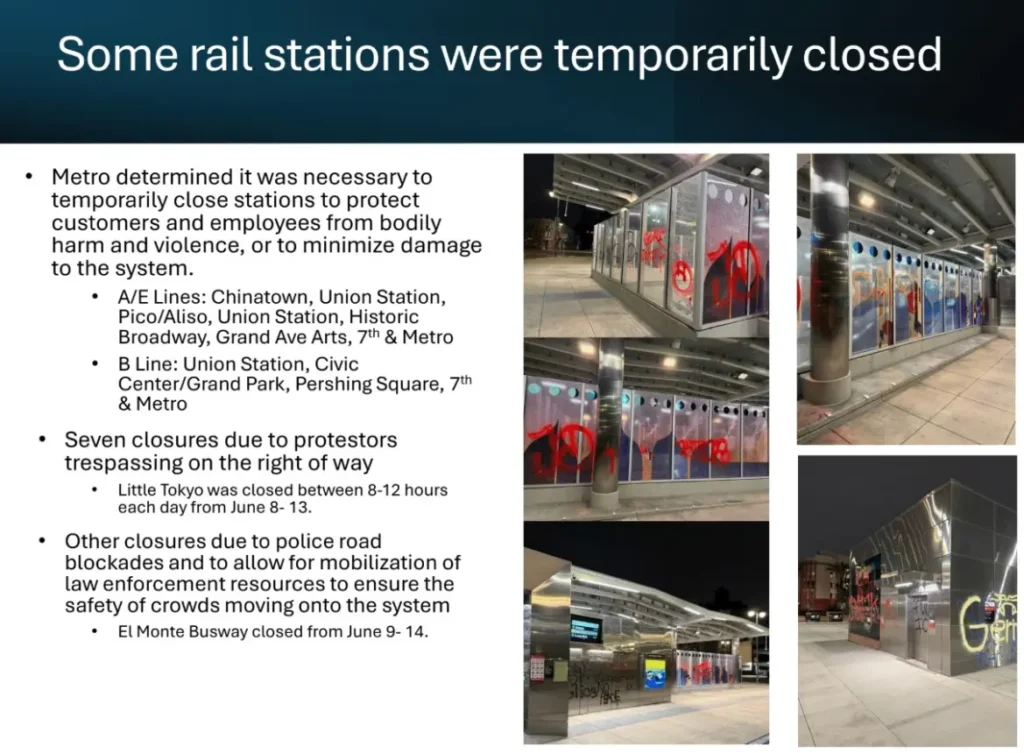
Metro staff showed surveillance video footage of people running along and across the underground A Line tracks in Little Tokyo. Metro reported that this resulted in “substantial vandalism.”


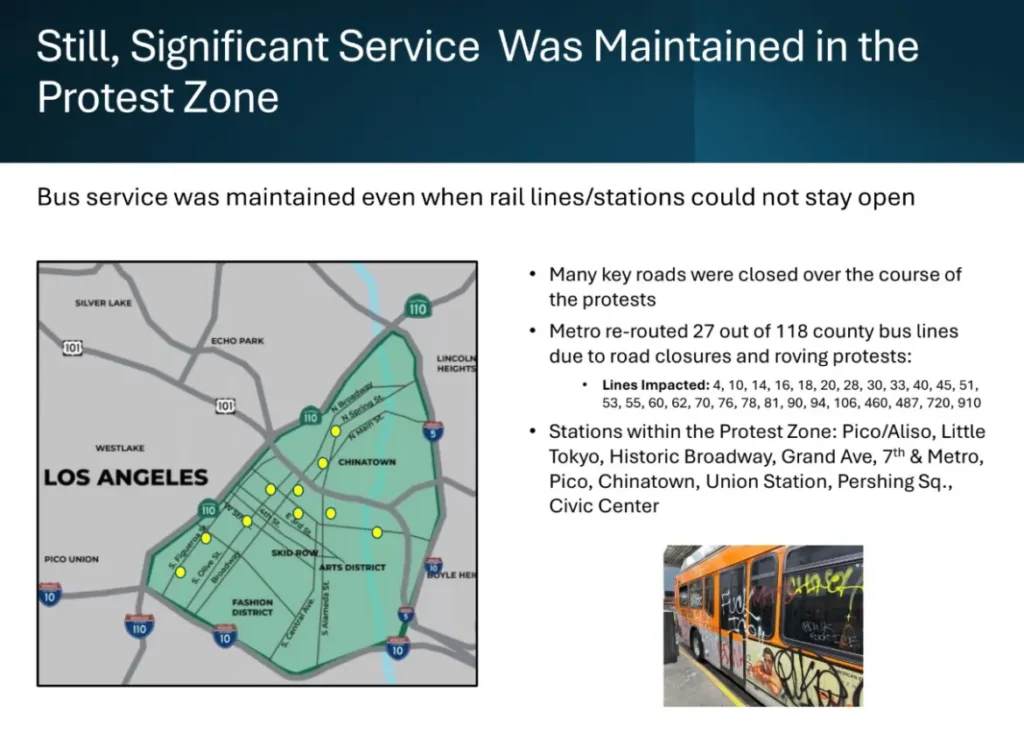
Though in some cases Metro riders were stranded or delayed, Metro staff generally characterized the agency’s recent responses as measured and necessary to protect Metro workers and Metro assets – vehicles, tracks, stations.
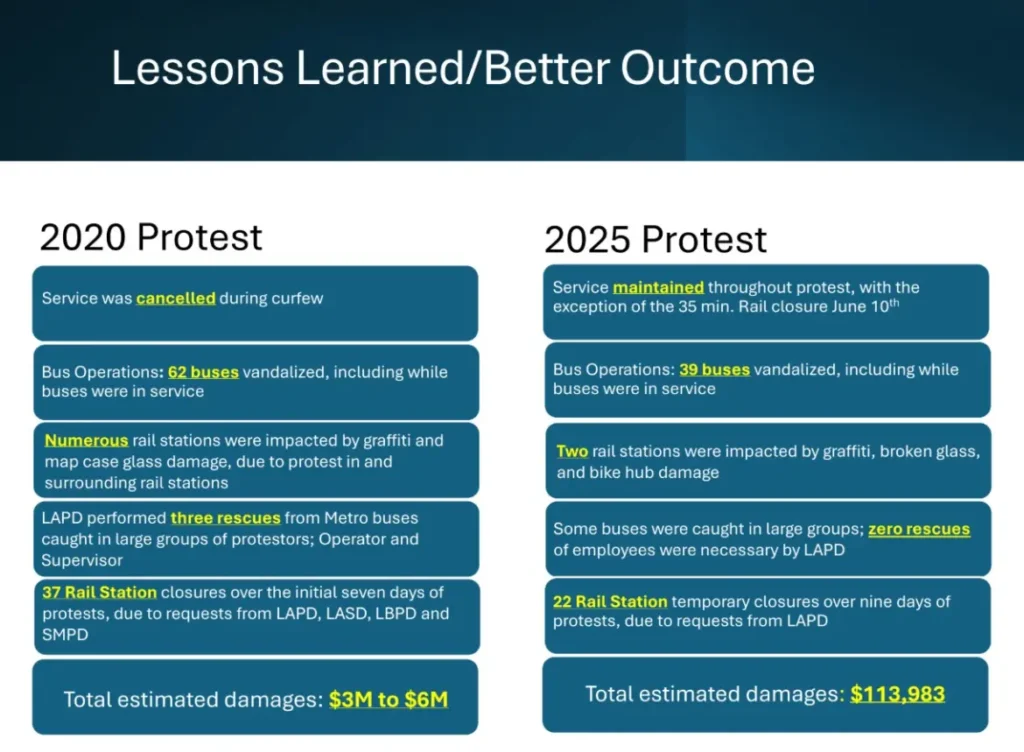
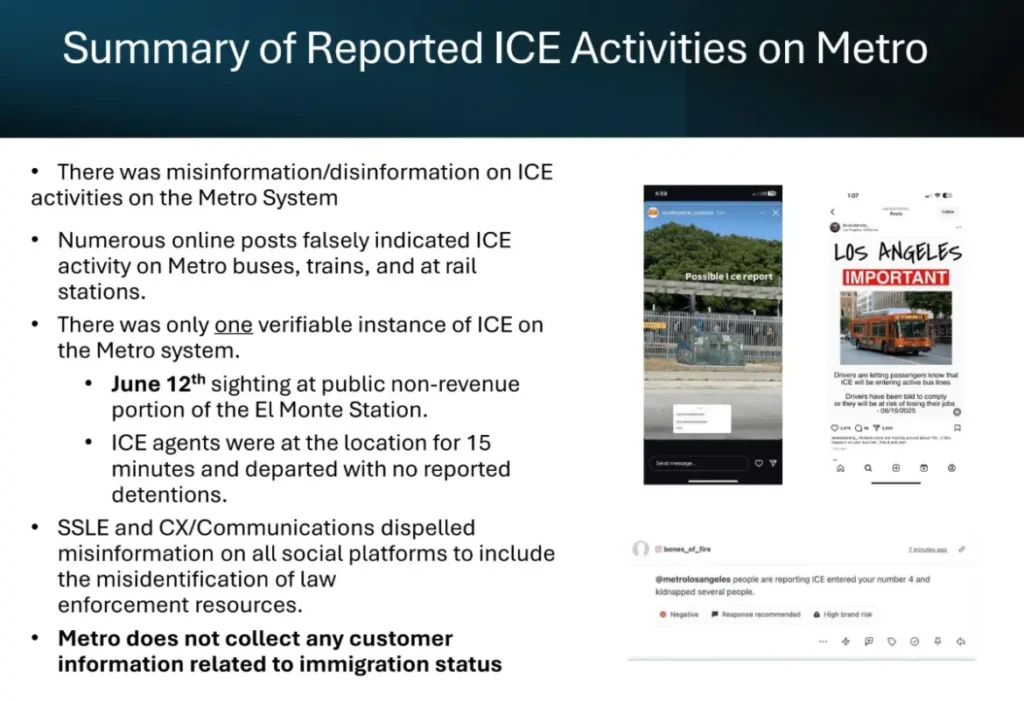
ICE agents have abducted people at Southern California bus stops, including in Pasadena. These stops are essential components of the Metro system, but technically they are the responsibility of the underlying cities. Metro notes that there have been various posts warning of ICE agents on buses and at Metro stations, but these were largely misinformation. Metro reported only one verifiable instance of ICE agents on Metro property – at the El Monte bus station.
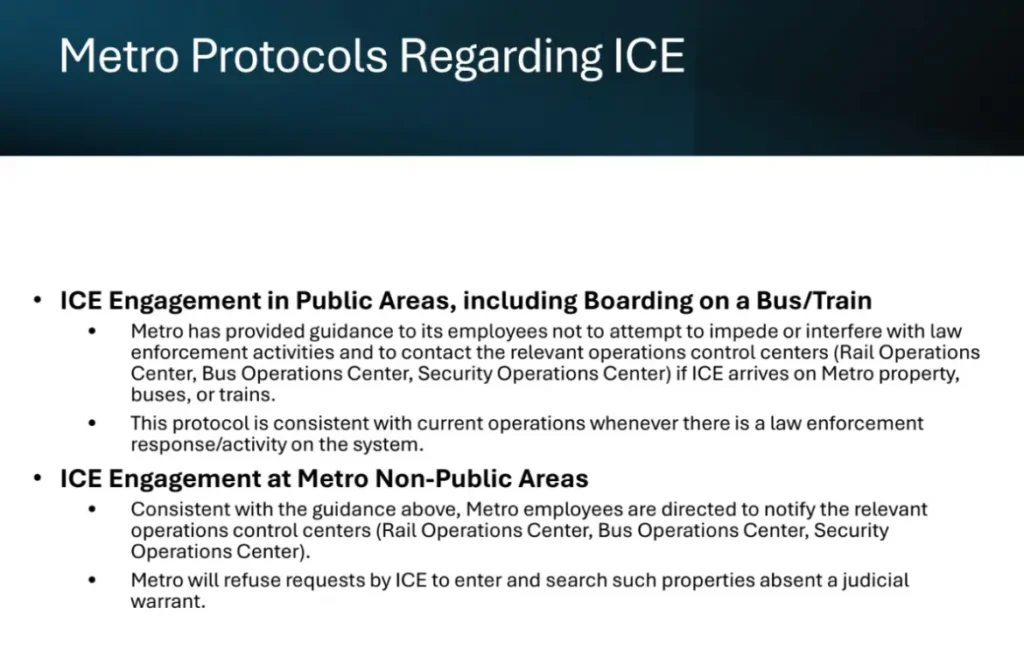
ICE agents have abducted people at Southern California bus stops, including in Pasadena. These stops are essential components of the Metro system, but technically they are the responsibility of the underlying cities. Metro notes that there have been various posts warning of ICE agents on buses and at Metro stations, but these were largely misinformation. Metro reported only one verifiable instance of ICE agents on Metro property – at the El Monte bus station.
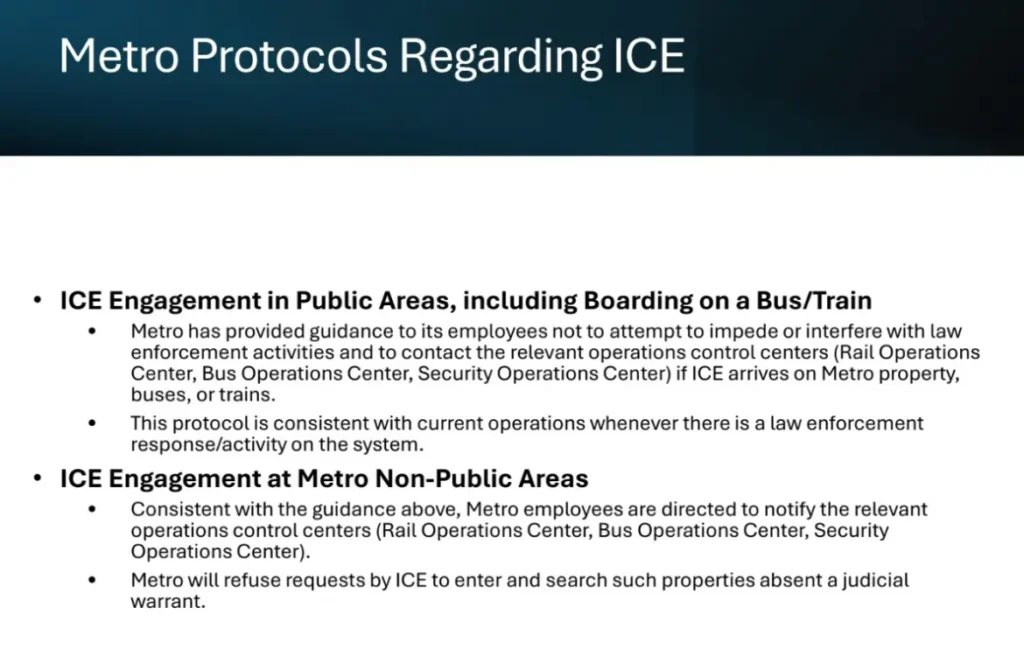
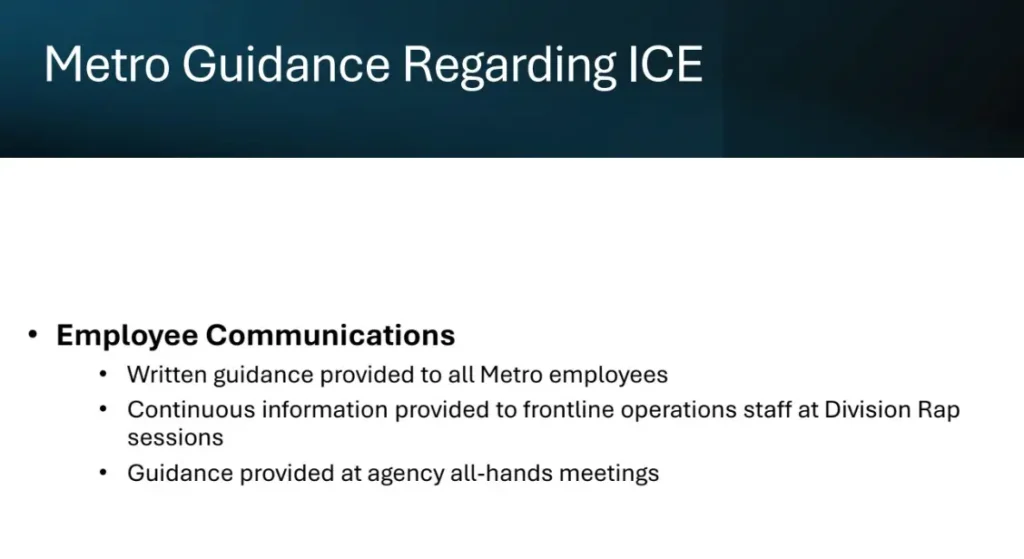
Metro reported on the agency’s protocol for ICE activity on transit or at stations, which is the same for other law enforcement activity.
In response to recent raids, protests, and disruptions, Supervisor Janice Hahn authored a motion to better “Ensur[e] Safe and Reliable Metro Service for All Riders.”
The motion includes several components:
- directs Metro to surge the deployment of Transit Ambassadors, and other “safety personnel,” to support riders during the current demonstrations and disruptions
- directs Metro to develop clearer procedures for station closures and service interruptions, and how they are communicated to the riding public
- directs Metro to develop a protocol to manage crowds at Metro stations during periods of heightened activity, including demonstrations – prioritizing the safety of riders and employees while maintaining transit service and minimizing disruptions
- directs Metro staff to report back on ridership impacts during recent heightened ICE activity (The L.A. Times recently reported a 10-15 percent drop in Metro ridership due to ICE raids.)
The Hahn motion was unanimously approved by the Metro board.
Today, U.S. Transportation Secretary Sean Duffy also weighed in on the recent “riots” and transit service impacts that his administration precipitated. Duffy sent letters to L.A. Mayor Karen Bass and to Metro CEO Stephanie Wiggins demanding various accountings of recent disruptions.
